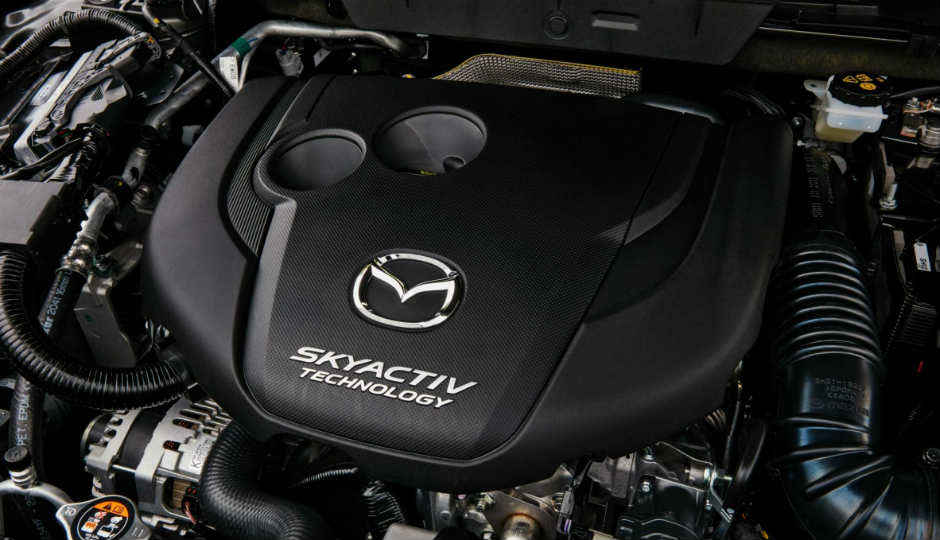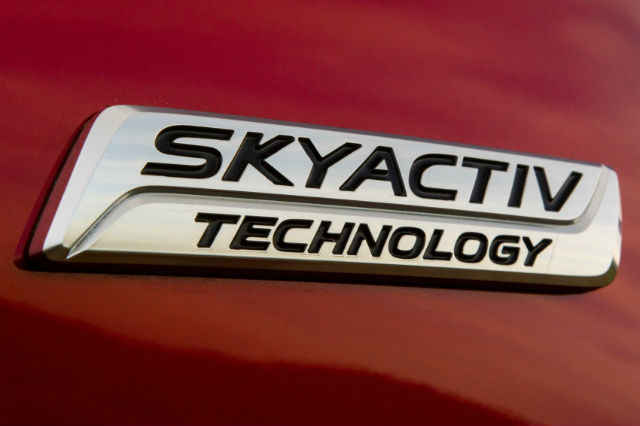Technology explained: The Mazda Skyactiv-X compression ignition gasoline engine

Striking a fine balance between the advantages of diesel and petrol combustion engines.
Last week, Mazda took the wraps off its new engine – the Skyactiv-X. When announcements of new engines are not a rarity in the automotive world, what truly stands out here is the nature of the engine. Researchers from automotive giants have been attempting for a long time to create combustion engines that provide better fuel economy, pollute lesser and are more competent on overall terms in the present climate of pollution woes. Worries concerning conventional fuels have spurned the electric car dreams back in motion, and all of this combined is what makes Mazda’s latest innovation a key invention.
Standard combustion engines
A typical combustion engine works by compressing the air in the engine’s cylinder and injecting fuel into the mixture, following which an explosion inside the cylinder creates force to push down the engine’s piston, and consequently, turn the crankshaft. The turning crankshaft’s motion is linked to the four wheels via a vehicle’s drivetrain, and it is this entire process that sets a car in motion. Greater the pace and intensity of the compression-explosion process, harder is the force generated by the piston, and faster is the pace of the machine in motion.
In a petrol engine, a component called the spark plug initiates the explosion of the compressed air and fuel mixture. The air here is kept at relatively cooler temperatures and at lower compression ratio, and the fuel is injected before the air is hot enough to create an internal combustion. As a result, it requires a spark plug to enable to combustion. This has two consequences – one, since the fuel gets more time to mix with the air in the cylinder, the resultant mixture produces a much cleaner combustion, and hence is less polluting by nature. However, the usage of a spark plug also means that this combustion process is not the most efficient, and this further leads to more fuel being used per unit of travel.
In a diesel engine, the air compression chamber compresses the air to much higher levels than a petrol engine, and the air reaches critical temperature before oil is injected into the cylinder. This negates the need for a spark plug, as there are no external agents required to create the combustion. This leads to two things – one, significantly higher fuel efficiency, because the fuel being injected is burnt more vigorously and that leads to more miles travelled per unit of diesel. Second, the overall combustion is not as clean, as the fuel does not mix properly with the air in the combustion chamber, and that leads to more pollutants being released.
The obvious way forward? A combination of the two, of course.
The Mazda Skyactiv-X
Before we proceed, it is important to realise exactly how difficult the engineering of such an engine may be. Looking into the principles of physics and the nature of combustion, there are natural processes that act as anomalies and step in the way of improving fuel economy or pollution. One such phenomenon is knocking, where the air in the combustion chamber reaches critical heat at uncontrolled times and leads to more combustion of fuel.
While this, in uncontrolled situations, can become a deterrent, controlling the phenomenon of knocking can actually allow engines to run at higher compressions at all times, thereby improving fuel efficiency, at least on paper. Such techniques have already been around in laboratories and on Formula One tracks.
Controlling unprecedented combustions require a more sophisticated control over valve opening timings, fuel injection, the mixture of exhaust gas, fuel and air, and exactly what proportions should each be mixed in. This sort of advanced control typically lets go of spark plugs for gasoline engines, but the problem with that is the unpredictability of the engines, and the lack of refinement for the most part.
It is because of this that the Mazda Skyactiv-X retains spark plugs, to be used in seamless combination with no-spark air compression. Termed as ‘spark controlled compression ignition’, the Mazda Skyactiv-X has an intelligent way to determine when to shift between using spark plugs and when to let the compression chamber act independently, thereby improving on both pollution and efficiency.
Further extensive details about the new engine are yet to be released by Mazda, upon which we will get to see exactly how this new combustion technology works. As of now, the Mazda Skyactiv-X is the answer to reduce pollution levels and increase efficiency of travel. It is also an answer to the fact that electric vehicles may just not be around en masse for about half a decade, in which such engines may become commonplace, starting 2019.





